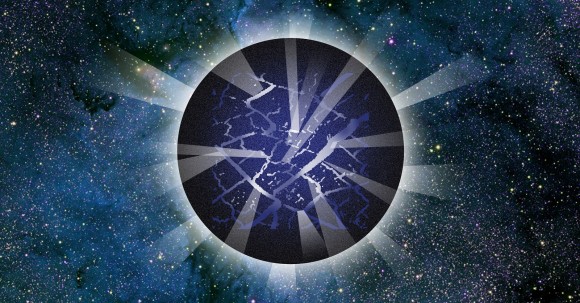| Online: | |
| Visits: | |
| Stories: |

| Story Views | |
| Now: | |
| Last Hour: | |
| Last 24 Hours: | |
| Total: | |
Starquake! How Super-Suns Swing, And What It Could Look Like

Artist’s conception of a starquake cracking the surface of a neutron star. Credit: Darlene McElroy of LANL
Much like how an earthquake can teach us about the interior of the Earth, a starquake shows off certain properties about the inside of a star. Studying the closest star we have (the sun) has yielded information about rotation, radius, mass and other properties of stars that are similar to our own. But how do we apply that information to other types of stars?
A team of astronomers attempted to model the inside of a delta-Scuti, a star like Caleum that is about 1.5 to 2.5 times the mass of the sun and spins rapidly, so much more that it tends to flatten out. The model reveals there is likely a correlation between how these types of stars oscillate, and what their average density is. The theory likely holds for stars as massive as four times the mass of our sun, the team said.
(…)
Read the rest of Starquake! How Super-Suns Swing, And What It Could Look Like (155 words)
© Elizabeth Howell for Universe Today, 2014. |
Permalink |
No comment |
Post tags: Astroseismology, delta-scuti, starquake
Feed enhanced by Better Feed from Ozh
Source: http://www.universetoday.com/110895/starquake-how-super-suns-swing-and-what-it-could-look-like/



